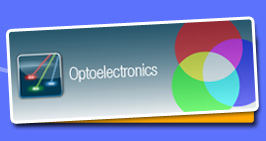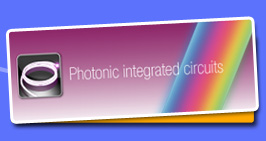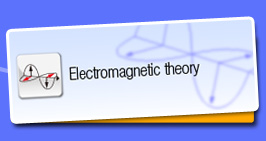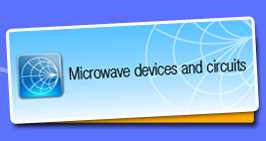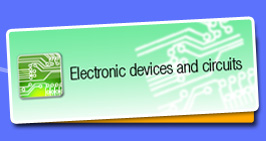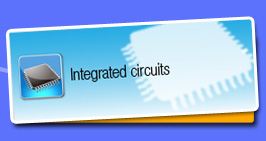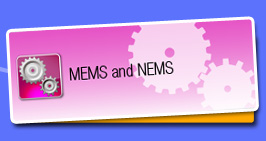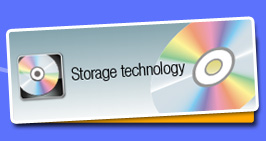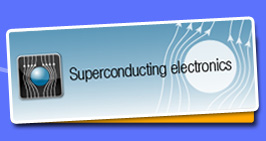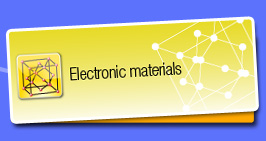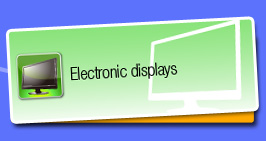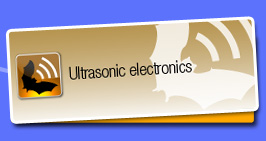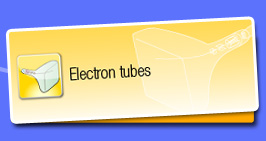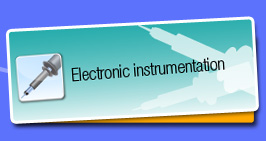Web page for manuscript submission
Authors are kindly advised to access and carefully read this page before submitting their manuscripts.
Instruction for authors (As of June 1st, 2021)
Notification:
ELEX has renewed the paper template since Jan. 2019 . The authors should use the newest template provided.
The contents would be subject to change without notification in advance. Authors who submit manuscript to ELEX are assumed to agree with information described in Instruction for Authors.
We recommend that all authors take this opportunity to join the IEICE. For detailed information on the IEICE Membership Application, please refer to here. If all authors are non members, the article processing charge for non members will be applied, except for invited papers.
Scope:
Please see here for more details.
Review policy:
ELEX publishes concise technical reports on outstanding inventions, innovation, and finding that have influential importance to electronics engineers. Rapid circulation of publication as well as article quality is deemed important for both contributors and subscribers working in the fast moving fields. For the promptness in reviewing and publishing procedures, authors are strongly advised to write their manuscripts clearly and simply so that the significance of their accomplishment can be readily spotted. All manuscripts are evaluated to be either "accepted for publication" or "rejected." Manuscripts that do not match the scope or the style regulation would be automatically rejected without being reviewed. Manuscripts that are evaluated as of minor values for electronics engineers might be rarely accepted even though they report novel results. Authors of manuscripts that could be potentially accepted after minor revision are informed by the corresponding Associate Editor comments and suggestions, and they are advised to consider re-submission. Note that the re-submitted paper is treated as a new submission.
Originality of manuscript:
Copyright Compliance
| 1. |
|
|
| 2. |
|
|
| 3. | Even if you are the author(s) of a manuscript, do not submit it if copyright problems exist, for example, if the copyright is held by a body other than the IEICE and cannot be transferred to the IEICE. | |
| 4. | In cases deemed to comprise plagiarism, penalties identical to those assessed in the event of duplicate submission shall be applied. |
No duplicate submissions
If you submit a material which is content identical or extremely similar to material that has already appeared or is in submission elsewhere, either by the same author(s) or by a team including any one of them, the IEICE will consider it as "DUPLICATE SUBMISSION" even if it does not violate "Copyright Compliance" and then apply the strict penalty to the author(s). The IEICE does not care about its written language, but care about semantic content similarity. Here, "in submission" means the period from its submission either to publication date or to rejected date or to withdrawn date. Notwithstanding the above, a paper will not be treated as a duplicate submission if every such material appearing therein is one of the following (a) to (f).
|
Refereed materials among the above (a) to (f) should be cited in submitted material as references.
Countermeasures against duplicate submission
If a manuscript is suspected of duplicate submission to any journal, the IEICE Editorial Committee has the right to investigate the situation by exchanging information with the Editorial board of the concerned journal. When the duplicate submission is confirmed by discreet inquiries, the IEICE Editorial Committee will apply the following sanctions against all the authors of the manuscript.
| (1) | Immediate rejection of the manuscript in question, and also immediate rejection of all other manuscripts under review that include at least one of the authors of the manuscript in question. | |
| (2) | Prohibition of any new submissions to all the IEICE transactions and journal for a term of one year or less. | |
| (3) |
|
|
| (4) |
|
Ethical considerations in research involving human participants:
The author(s) should obtain approval for research related to the life or living organism of the participant from the ethics committee within the author's institution or the equivalent organization. However, if the author group belongs to multiple institutions, it is sufficient to obtain approval from at least one institution.
Protection of personal information:
Sufficient care should be exercised when submitting a manuscript bearing personal data such as photographs or names to the transactions. If necessary, written permission should be obtained from the individual concerned.
Preparing manuscript:
Manuscripts to ELEX are accepted via electronic submission only. Authors are requested to prepare manuscript by using one of the officially approved formats (LaTeX style file or Microsoft Word template), in which all the styles and formats are prescribed. Do not modify formats (font, font size, paper size, printing area, line space, etc.). The number of pages is limited by 6. The first page contains paper title, author list, affiliation(s), 100-word-abstract, keywords, and references. Since ELEX manuscripts are rapidly published as submitted (or at least minimum editing/formatting by publisher), it is essential to adhere to the provided templates. Instructions for including movie files in a PDF file are described in the template files.
[For papers submitted after June 1, 2024]
For LaTeX users:
Sample movie file: lens_scanner.mov
For MS Word users:
Sample movie file: lens_scanner.mov
References:
Authors are requested to cite adequate number of references to acknowledge previous and related work by others. ELEX strongly recommend authors to cite 30 or more references. Note that submitted papers with fewer references may be rejected.
References should appear in the orders in which they are referred in the main text.
It is authors’ responsibility to provide correct information of references. Use a pair of square bracket to cite reference like this [2]. Multiple references can be cited like this [1,2,3,4,5].
See the instructions and examples below regarding acceptable formats for different types of references. If an article has a digital object identifier (DOI), authors should include the DOI. If there are three or more authors, you may abbreviate the co-authors by writing “et al.” in Italic.
A. Journal papers
1) List of authors, comma-separated, with a colon placed at the end
2) Full title of the paper with a comma at the end, enclosed in double quotation marks
3) Name of the journal with an official abbreviation
4) Volume number in bold
5) Published year in parentheses
6) Beginning page number or the paper identification number
7) DOI in parentheses (if available)
Example:
[1] J. A. Fredenburg and M. P. Flynn: “A 90-MS/s 11-MHz-bandwidth 62-dB SNDR noise-shaping SAR ADC,” IEEE J. Solid-State Circuits 47 (2012) 2898 (DOI: 10.1109/ISSCC.2012.6177094).
[2 ] T. Numata, et al.: “Circuit simulation model for ultimately-scaled ballistic nanowire MOSFETs,” IEICE Electron. Express 10 (2013) 20120906 (DOI: 10.1587/elex.10.2012090).
B. Conference proceedings (Not recommended. Cite if no appropriate journal found.)
1) List of authors, comma-separated, with a colon at the end
2) Full title of the paper with a comma at the end, enclosed in double quotation marks
3) Name of the proceeding with an official abbreviation
4) Published year in parentheses
5) Beginning page number or paper ID
6) DOI in parentheses (if available)
Examples
[4] S. Luetkemeier, et al.: A 200mV 32b subthreshold processor with adaptive supply voltage control,”,ISSCC Dig. Tech. Papers (2012) 484 (DOI: 10.1109/ISSCC.2012.6177101).
C. Papers in review
1) List of authors, comma-separated, with a colon at the end
2) Full title of the paper with a comma at the end, enclosed in double quotation marks
3) “submitted to’’
4) Name of the journal or conference
Example
[ 5] A. Satoh and S. Suzuki: “Future of electronics,” submitted to IEICE Trans. Electron.
D. Books
1) Full list of authors, comma-separated, with a colon at the end
2) Book title in Italic with “in” placed at the beginning if an editor are provided
3) Editor(s) with “ed.” at the beginning if any
4) Name of the publisher, city of publication, year of publication, comma-separated in parentheses
5) Edition number, such as “2nd ed.’’ if any
6) Page number(s) where cited
Examples
[ 6] S. M. Sze: Physics of Semiconductor Devices (Wiley, New York, 1981) 2nd ed. 55.
[ 7] D. Edwards: in Handbook of Optical Constants of Solids, ed. E. Palik (Academic Press, New York, 1985) 547.
E. Thesis/dissertation
1) Name of the author with a colon at the end
2) Full title of the thesis/dissertation
3) “Ph.D Dissertation”
4) Name of the university/school
5) Published year in parentheses
Example
[ 8] A. Smith: “Design and implementation of Terahertz CMOS transmitters,” Ph.D Dissertation, University of California, Los Angeles (2011).
F. Patents
1) Full list of authors, comma-separated, with a colon at the end
2) Patent number and country
3) Patented year in parentheses
Example
[ 9] Y. Takahashi and M. Nawa: Japan Patent 652696 (1971).
[ 10] A. C. Smith: U.S. Patent 3390940 (1988).
G. Web sites
Web site may be added as an adjunct to the other proper references only if it is maintained as an archival site.
Examples:
[ 11] European Telecommunications Standards Institute: ETSI-TR-101 (2007) http://www.etsi.org.
Articles with DOI
If an article has a digital object identifier (DOI), it is recommended to include the DOI in its citation.
Example
[6] I. Yamagami and J. Yamashita, "Pattern Recognition with Gaussian Mixture Models," IEICE Trans. Inf. & Syst., vol. E62-D, no. 1, pp. 20-27, Jan. 2014. DOI:10.1587/transinf.2014EDP0001
Suggestion for authors preparing multi-color display items:
Color figures or movies can be included in ELEX manuscripts. Authors, however, should be reminded that some reviewers/readers might be colorblind. Authors are kindly advised to consider the following suggestions when preparing figures or movies:
- Avoid using combination of red and green. Use magenta (purple) and green instead.
- Do not overuse colors in the graphs but consider using different hatchings, shapes, line types (solid, dotted or dashed) or symbols for different curves.
- Note that red color does not appear bright or vivid for colorblind people. Avoid using red characters or symbols for the purpose of highlighting.
For further information, see this webpage: http://jfly.iam.u-tokyo.ac.jp/color/
Submitting manuscript:
To submit manuscripts to ELEX, authors should visit an IEICE website(https://review.ieice.org/regist/regist_baseinfo_e.aspx) to complete a Submission Form and to upload the following items:
- a PDF file for review
- an electronic file of manuscript in either LaTeX or MS Word
- original art work in separate electronic files
Art submitted electronically is only acceptable as Encapsulated PostScript (.EPS) for graphics and MOV or MPG for movies. Self-descriptive file names such as fig1.eps and fig2.mpg are preferred.
Authors are also requested to select the subject index (code and field) best fitting manuscript from the candidates. The index is used by the ELEX editorial office when directing manuscript to corresponding Associate Editor. Furthermore it is displayed in ELEX website and in archives for readers' convenience. The Editorial Committee may change the subject index that authors select, if the Editorial Committee judges that the authors' selection is not the best.
Authors are also requested to complete and submit Copyright Transfer and Article Processing Charge Agreement Form on the ELEX online submission system.
Submission is completed only after all the necessary materials are received and validated by the ELEX editorial office. Authors will be notified of the acknowledgment of the editorial office by an e-mail automatically sent by the online submission system.
It is authors, not the IEICE, who are responsible that contents of manuscripts are legitimate and they are legally submitted.
No change in authorship is permitted once a manuscript has been finally accepted.
ELEX Checklist or Key Prerequisites for acceptance:
Please use this checklist or prerequisites to help you ensure that your paper meets the following criteria we expect from submitted papers. The paper with the clear violation is never reviewed and rejected immediately:
1) Novelty:
Does your paper provide new ideas or results that attract relevant research community?
Clear novelty is one of the most important qualifications which we ask referees to consider for reviewing.
2) Significant advance :
Does your paper clearly identify the significant advance over the state-of-the-art in the context of previous work done in the relevant research fields? Just an incremental or additional work over your previous work or other researchers is strongly discouraged.
3) Technical Evidence
Does your paper have technical evidence sound enough to validate its claims? Does the form of evidence meet the standards of the relevant research fields.
4) References
Does your paper have a list of sufficient references which are most recent and most relevant? Does your paper clearly set your work in the context of those references? A list of over ten references is strongly advised.
5) Readability
Is your paper clearly written in plain English and well organized? Readability is solely author's responsibility. The lack of it makes your paper immediately rejected.
6) Appropriateness to the scope
Is your paper appropriate to the scope of ELEX? We are seeking a paper in the field of advanced electronics focusing on hardware implementation.
Advance publication:
[What is an advance publication?]
An advance publication is a publication category which ELEX offers to all the accepted papers to meet authors' increasing demand to disseminate their work more rapidly.
An accepted paper is first published before being copyedited in the category of an advance publication. The paper will then undergo copyediting and be published in a journal issue as a final publication. The advance publication will be replaced with the final one as soon as it appears in the issue.
The content of the paper is final at the moment of advance publication. The originality of the paper is transferred from the version of the advance publication to the final version as the editorial process proceeds. The authorized publication date of the paper is the date of the advance publication.
[How to cite]
The paper in the advance publication can be cited with its unique identification number called paper number from the moment the paper appears in ELEX web site. The paper number is a unique, eight-digit number which is assigned upon paper's acceptance. The paper number is final allowing readers to use the same reference point consistently regardless the paper's publication status, whether it is an advance or final version.
A following example shows a typical format to cite an ELEX paper. The format is a sequence of authors' names, journal title, volume number, publication year in parentheses, and paper number:
T. Suzuki and K. Shiraishi: IEICE Electron. Express 10 (2013) 20130029
Beginning with vol. 10, issue 1 (15 January 2013), ELEX changed the way of identifying its paper from on a page-number basis to on a paper-number basis. At the same time, ELEX stopped the pagination for its papers across a volume and started the new pagination on a paper-by-paper basis.
Reading page proof:
Page proofs in the PDF format are sent to the corresponding author only once prior to the publication of the manuscript. Minor and typographical errors should be corrected on the printout or by PDF mark-up and returned to the IEICE Office via fax, web, or e-mail within three (3) business days, after which the manuscript may be published as is.
Article processing charge:
Upon accepted for publication, the authors are requested to pay a mandatory article processing charge depending on the number of printed pages and the electronic file format:
1)JPY 55,000 3 or fewer printed pages in Latex format
2)JPY 66,000 3 or fewer printed pages in MS word format
3)JPY 110,000 4 to 6 printed pages in Latex format
4)JPY 132,000 4 to 6 printed pages in MS Word format
A display item of a movie picture requires an extra cost of JPY 3,300 per movie file.
*The number of pages is limited by 6.
**Errata charge is same as 3 or fewer printed pages, if only the issues come from authors.
***If all authors are non-members, we request an additional JPY 20,000 for letters submitted from June 1st, 2021.
Payment by credit card is the only acceptable method to pay for the publication charge. Authors should notice that papers are held for publication until the payment is received by the ELEX editorial office. If the payment cannot be confirmed within one month, the paper will be handled as rejection and ELEX will not receive any paper written by one of the authors for one year or less as the penalty.
Submission to IEICE Transactions:
Papers published in ELEX are categorized as “LETTERS.” Consequently, ELEX welcomes submission of short papers that focus their originality or novelty. Authors are encouraged to submit articles which contain complete descriptions of their research findings to the IEICE Transactions as “FULL PAPER.”
IEICE publications online (English page) < http://www.ieice.org/eng/for_readers/online_transactions.html>
IEICE publications online (Japanese page) < http://www.ieice.org/jpn/trans_online/index.html>
Copyright:
The copyrights for all articles in journals published by the IEICE, whatever medium it may be presented, are automatically transferred to the IEICE.
However, authors themselves may copy, translate or modify their own manuscripts.
In such cases, when translating the manuscript or using all or most of the manuscript in other publications, authors should report the fact to the IEICE, and the original manuscript should be clearly cited in the publications.
Even when only part of the manuscript is used, the reference for the original manuscript should be included, or the reference should be presented in the figure captions.
On the other hand, you do not need to apply for permission to use a work as long as it is to be used for non-profit purposes in some exceptional cases.
For example, the final PDF version of your accepted paper is allowed to upload on the websites of your organization, blogs, and preprint servers, after publication on the ELEX website without applying for permission.
The advance publication can be also used in exception cases, but it should be replaced with the final one as soon as it appears in the ELEX website.
For details of IEICE's copyright policy, please refer to the following site for Provisions on Copyright:
1) https://www.ieice.org/eng/copyright/files/copyright.pdf
Privacy:
The IEICE collects personal information of authors when they submit manuscripts to ELEX. The IEICE may use collected personal information only in the activities for improving its publishing services and providing authors with further benefits. Examples of such activity are statistical analysis of submission, e-mail alerting of the latest updates, requests for comments and suggestions to the ELEX services. Authors’ personal identifiable information will not be disclosed unless the law requires it. The IEICE may share aggregated information with partners.
Refutation:
Authors who disagree with reviewers’ comments and with evaluation of the editorial committee are given the opportunity to submit their refutation in document to the Editor. The refutation shall be forwarded to the reviewer. The editorial committee makes decision with reference to the reviewer’s response. Authors are notified of the results within 90 days after the refutation is submitted. Refutations can be submitted only once for the respective manuscripts.
Withdraw submission:
Authors should not withdraw their submitted papers because the withdrawal wastes voluntary works devoted by an associate editor and reviewers. But, we accept the withdrawal of a submitted paper if authors have unavoidable reasons. Authors must follow the procedures shown below when they withdraw their submitted papers.
1. Authors must send a withdraw request letter by e-mail with its scanned PDF file or by FAX to the ELEX editorial office before the notification of acceptance for publication. The withdraw request letter must include the following information.
(a) Paper number
(b) Paper title
(c) Authors names
(d) Reason why the paper must be withdrawn
(e) Date and signatures of all the authors (or signature of the contact author)
If only the contact author signs the letter, he/she must obtain the agreement of the withdrawal from all the other authors and the letter must include the description that all the other authors agreed the withdrawal.
2. After the paper is accepted for publication, the withdrawal is not permitted in principle. The authors must always pay the article processing charge even if the withdrawal is permitted. Moreover, in the case where the manuscript has already been published in our transactions including advance publications, a notice that announces the cancellation of the paper is published together with the indication of the cancellation on the web site of Transactions Online.
3. The Editor-in-Chief decides whether the withdrawal is allowable or not. The ELEX editorial office will send the authors the decision of the Editor-in-Chief. If the authors don't receive any reply from the ELEX editorial office, they must send an inquiry about the withdrawal to the office.
4. The date of the withdrawal is given in the permission.
5. Any request of withdrawal that does not follow the above procedure is treated as invalid.
If illegal submission, e.g., plagiarized or duplicate submission, is found for a paper, the withdrawal of the paper will never be permitted and the authors will be punished based on the rule.
Citation:
IEICE ELECTRON EXPRESS is abbreviated as "IEICE Electron. Express."
On January 1st, 2013, ELEX has changed the way of identifying its paper from a combination of three numbers, volume, issue, and page to a paper-number that is an unique eight-digit serial number like 20130001. Accordingly, we would like to ask all the authors to cite the paper as presented below. A following example is a typical citation format in ELEX. The format is a sequence of authors' names, journal title, volume number, publication year in parentheses, and paper number:
T. Suzuki and K. Shiraishi: IEICE Electron. Express 10 (2013) 20130029
Citation alert services:
In ELEX, you authors can receive citation alerts which notify you via email that your paper is cited in articles published in qualified technical journals(*1).
In order to use the services, follow the steps below.
1) Make your account in the J-STAGE site in which ELEX papers are publicized on line. The entrance is “Register” icon on the topmost part of the J-STAGE site.
2) Access your paper and display the abstract on the J-STAGE site.
3) Click the icon "Add to Favorite Articles/Citation Alerts" located on the right-hand side of the J-STAGE site.
4) Mark the check box of ``citation alert'' for the paper you want to receive the alert email.
Enjoy the service to check your past achievements.
(*1) The journals whose publishers participate in CrossRef and use its forward linking service
Multilingual translation and limited-time open access trial:
Papers published after April 2024 will be machine translated into multiple languages when they are published in IEICE Transaction Online. However, advance publication papers will not be translated into multiple languages.
Authors may be asked to confirm or correct the translation results into their native language after publication.
Click here for more information about the multilingual translation and limited-time open access trial.
